Pale Male Eye Candy
Pale Male spent the early evening on Friday, just north of Cleopatra’s Needle, which is west of the Metropolitan Museum.







Pale Male spent the early evening on Friday, just north of Cleopatra’s Needle, which is west of the Metropolitan Museum.







An afternoon search of Morningside Park and the NW section of Central Park for the St. John Red-tails came up empty on Friday. I suspect that the fledglings are now hunting on their own and their range has increased making it much harder to find them. If you’ve seen them recently, please leave a coment!
I did see two unexpected sightings. An Eastern Kingbird and an Amercian Crow one one of the Red-tails favorite spots, 301 W 110th Street.



I went birding on Sunday in hopes of finding the St. John the Divine hawks or the 1st Year Red-tailed hawk, Ben Cacace and Lincoln Karim have been seeing in Central Park. I didn’t find either of them.
I did see some old favorites however, the Red Squirrel (the only one in Central Park), Lola, the female Red-tailed Hawk from the 5th Avenue nest, who was on the NE tower of the Beresford keeping an eye on a Kestrel pair on the SE tower, and the two young Green Herons.







My knee is improving, so I went into Central Park for the first time in about two weeks. The fall migration has started and warblers are starting to return to the park. In my brief outing in the park, I saw a Yellow Warbler, an American Redstart and two Northern Waterthrushes.
The Green Heron young have left the nest, and I found two of them feeding with a parent in a tree 20 feet south of the nest and along the shoreline of the lake. Having been away for two weeks, I’m not sure if we’ve lost another young heron, or if one of the birds has already fledged and has begun to feed on its own.
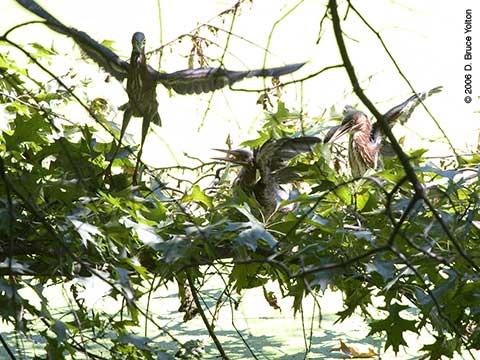
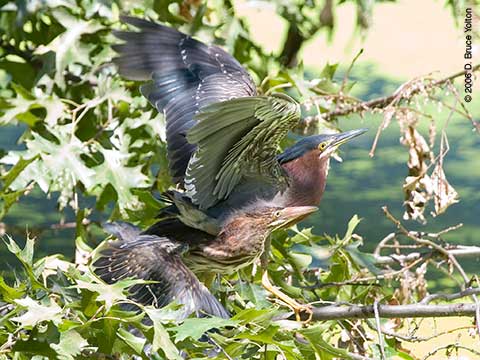
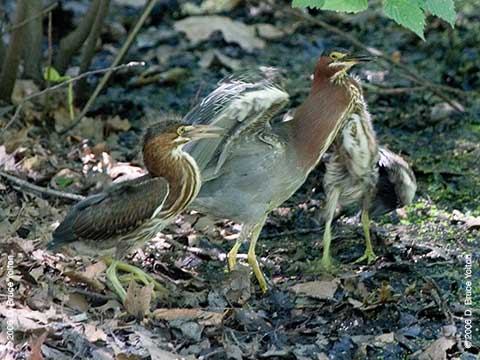
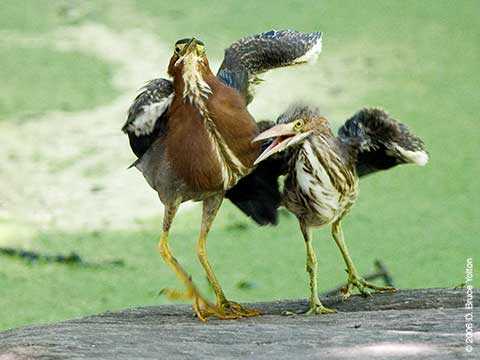
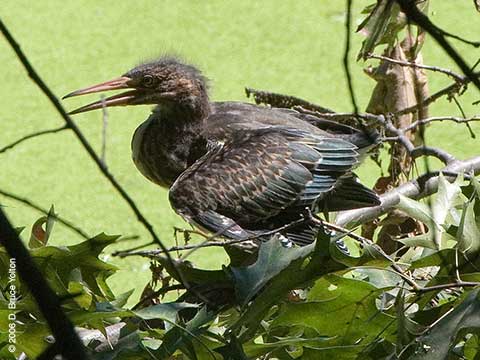
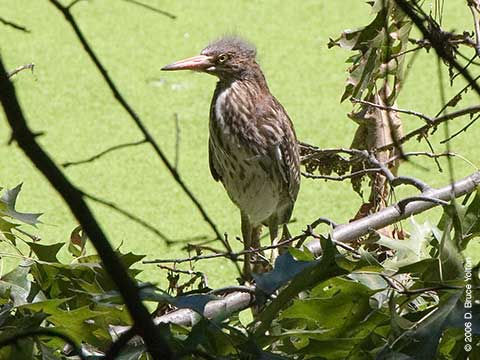
I’m sorry to report that smallest of the Green Heron hatchlings has died. Cal Vornberger, the gifted wildlife photographer and author/photographer of Birds of Central Park, witnessed the death and has a compelling set of photographs on his blog, www.calvorn.com. Cal has put together a slide show of the photographs at http://www.calvorn.com/herons.html.
On Sunday afternoon, the weather cleared and I made a visit to Morningside Park. The two fledglings were found playing with sticks at the southern edge of the park. Stick play is common for fledglings of this age and prepares them for hunting and killing prey.
The fledglings moved from tree to tree along 110th Street and lower Morningside Drive for over an hour. Although, we didn’t witness any feedings there was a large pile of fresh pigeon feathers beneath a tree near the southern children’s play area.








